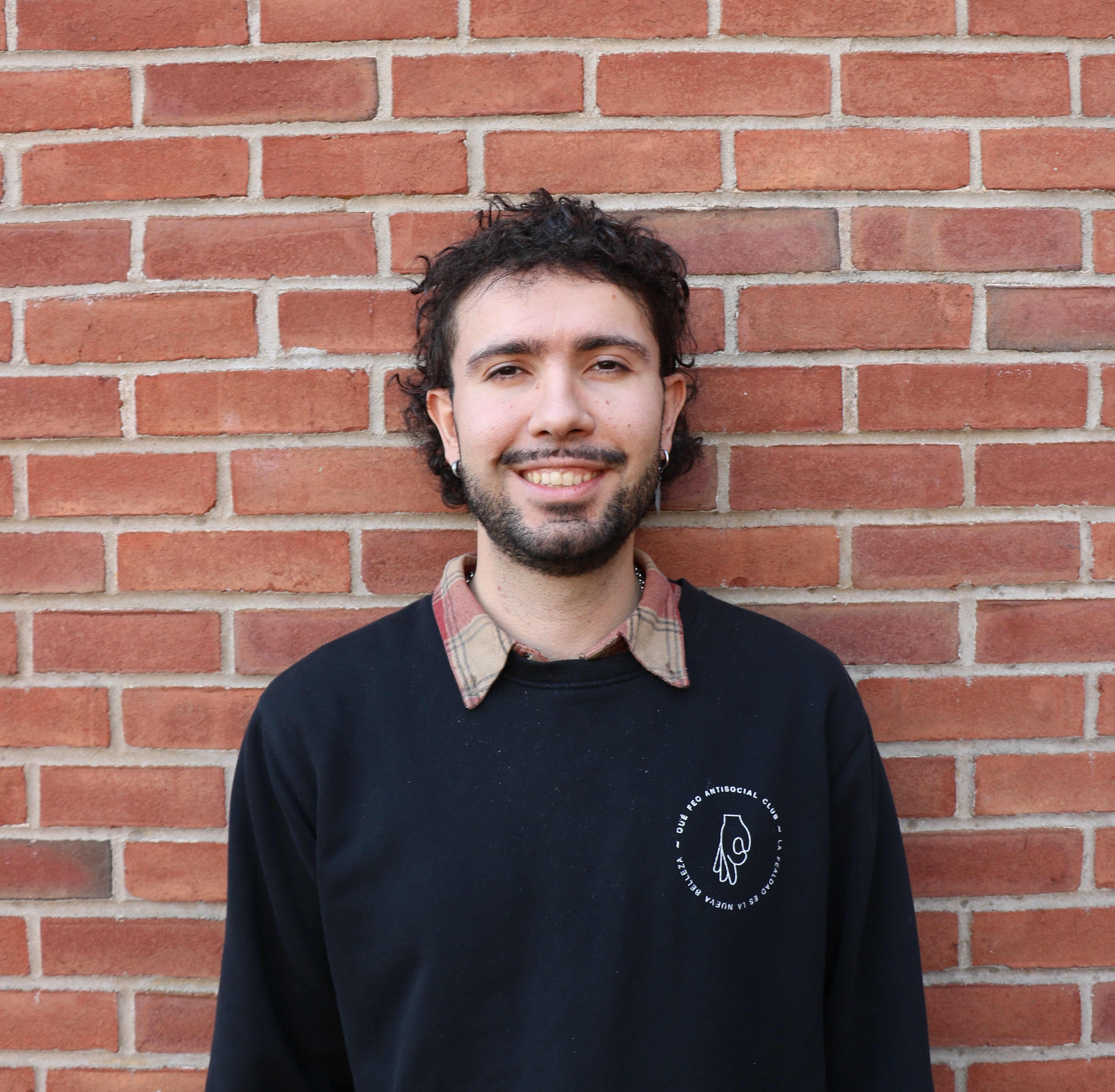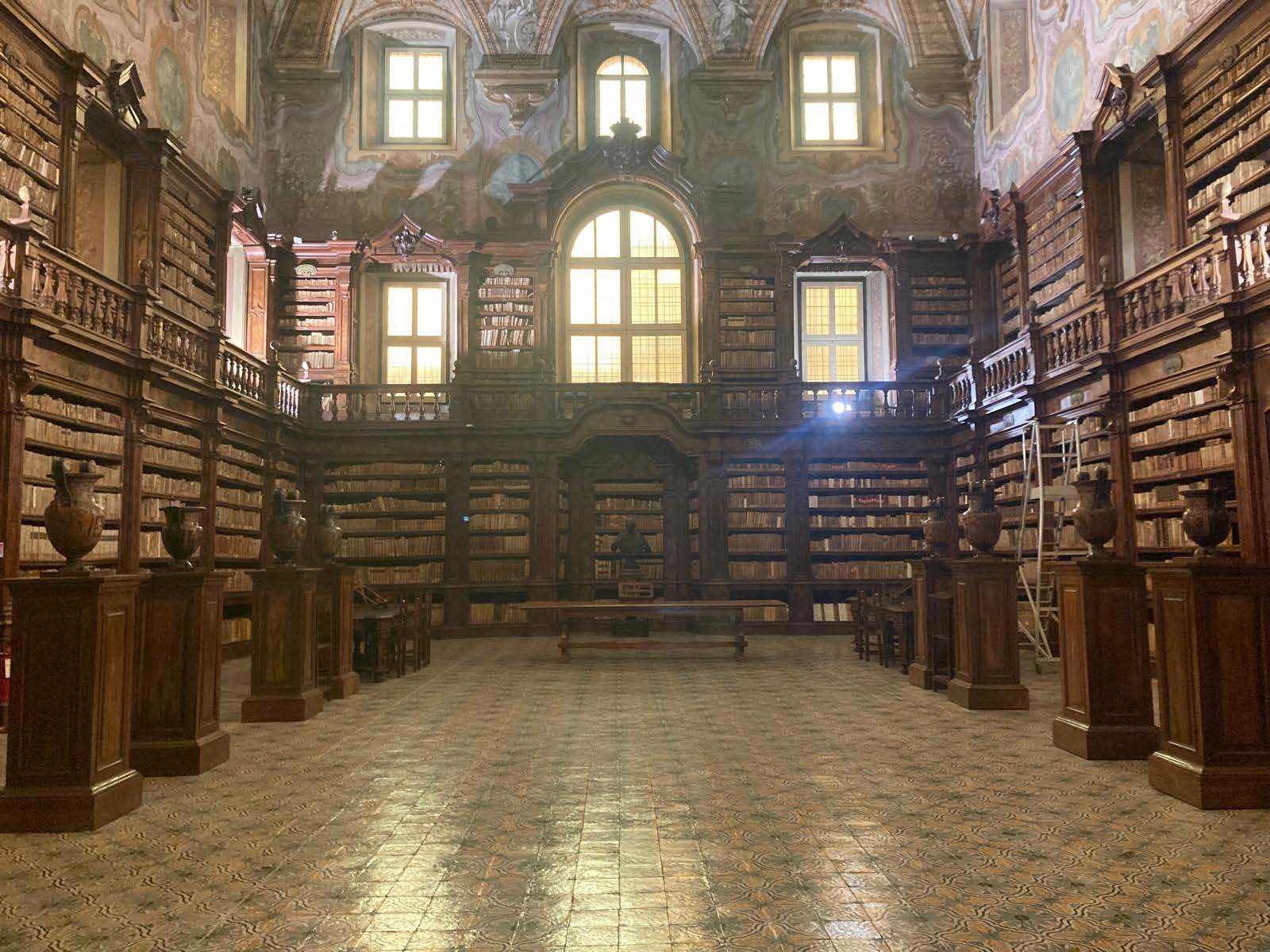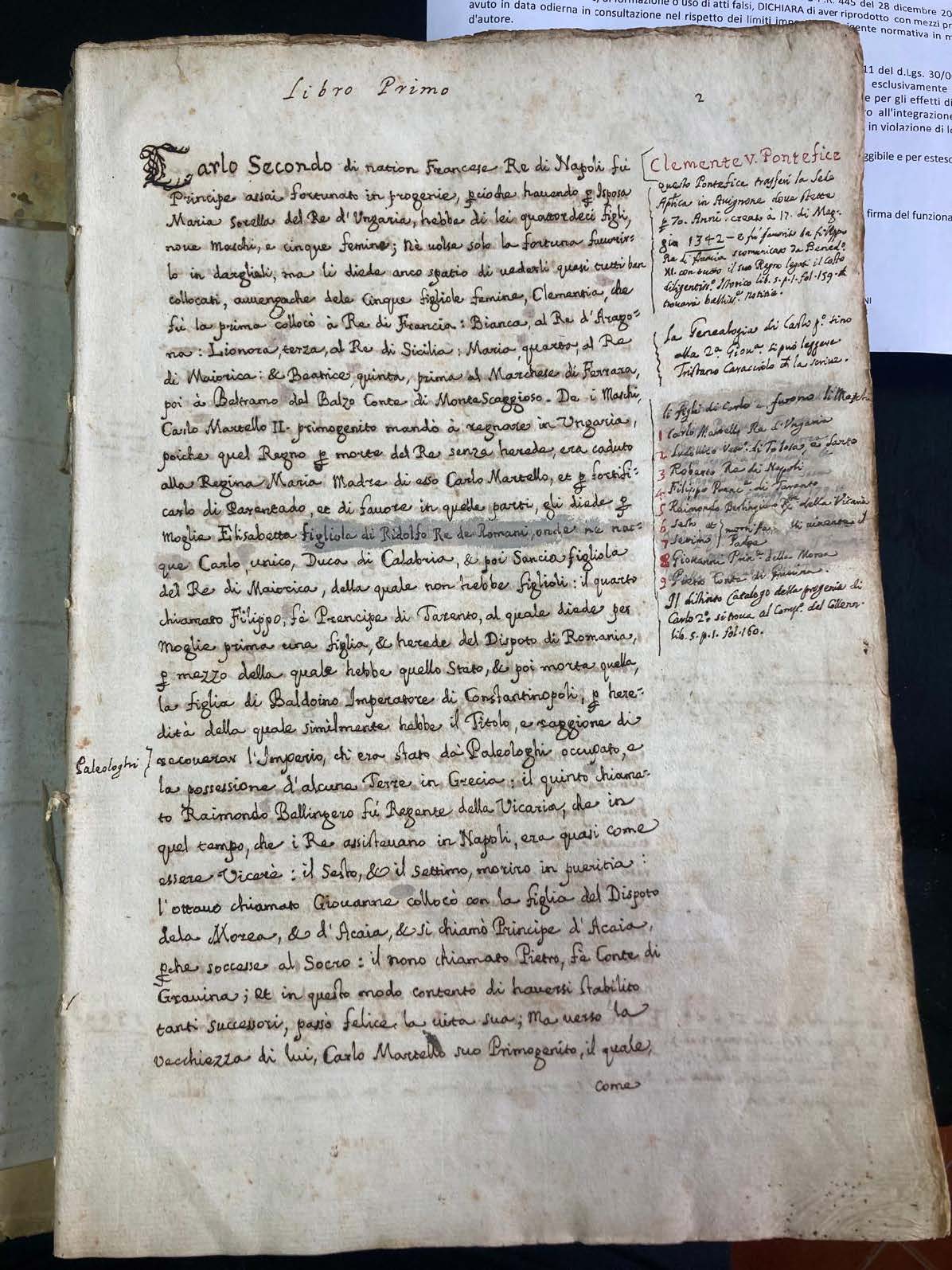Quim Solias
PhD candidate, Department of Hispanic Languages and Literature
Guiliano Fellow, Fall 2024
"Early Modern Collecting Between Barcelona and Naples under the Dukes of Sessa" (Naples,
Italy)
 Before arriving in Naples, my research aimed to investigate the circulation of art
and books between Barcelona and Naples during the late sixteenth and early seventeenth
centuries, focusing on the collecting practices and cultural patronage of the Dukes
of Sessa, Antonio and Luis Fernández de Córdoba. I expected to find notarial documentation
–such as wills, inventories, and financial records– that could shed light on the acquisition,
exchange, or inheritance of artworks and books associated with these noble patrons.
I also hoped to trace connections between the Dukes of Sessa and intellectual figures
like the Catalan historian Rafael Cervera, in order to better understand his role
in the networks of cultural exchange between the two cities. My goal was to reconstruct,
through archival evidence, the material strategies and ideological frameworks behind
collecting practices across the Spanish Mediterranean.
Before arriving in Naples, my research aimed to investigate the circulation of art
and books between Barcelona and Naples during the late sixteenth and early seventeenth
centuries, focusing on the collecting practices and cultural patronage of the Dukes
of Sessa, Antonio and Luis Fernández de Córdoba. I expected to find notarial documentation
–such as wills, inventories, and financial records– that could shed light on the acquisition,
exchange, or inheritance of artworks and books associated with these noble patrons.
I also hoped to trace connections between the Dukes of Sessa and intellectual figures
like the Catalan historian Rafael Cervera, in order to better understand his role
in the networks of cultural exchange between the two cities. My goal was to reconstruct,
through archival evidence, the material strategies and ideological frameworks behind
collecting practices across the Spanish Mediterranean.
The first thing I did when I arrived in Naples was meet with the team at the Istituto di Scienze del Patrimonio Culturale at the Consiglio Nazionale delle Ricerche (ISP-CNR), who quickly put me in contact with several experts familiar with the archives of Naples. As a result, I consulted with professors and archivists in the city to introduce my research. They offered valuable advice and confirmed that I should consult the Fondazione Banco di Napoli, the National Library, and the Archivio di Stato.
Although I was unable to find direct documentation of Rafael Cervera’s presence in
Naples, I did find evidence of his presence in other Italian cities, as well as traces of his patron in the Neapolitan context through
bank account records I consulted at the Fondazione Banco di Napoli. I gained valuable
insights into the literary and intellectual milieu in which this author and antiquarian
operated during his time in Naples. I explored this environment in the manuscript
and rare books section of the Biblioteca Nazionale, as well as in the printed books
section.
Italian cities, as well as traces of his patron in the Neapolitan context through
bank account records I consulted at the Fondazione Banco di Napoli. I gained valuable
insights into the literary and intellectual milieu in which this author and antiquarian
operated during his time in Naples. I explored this environment in the manuscript
and rare books section of the Biblioteca Nazionale, as well as in the printed books
section.
Additionally, in the Archivio di Stato –specifically in the notarial archives and the Regia Camera della Sommaria– I was able to trace the activities of his patrons, Luis Fernández de Córdoba and Antonio Fernández de Córdoba, the 5th and 6th Dukes of Sessa, both in Naples and Rome. According to Cervera’s own writings in his Discursos Históricos de la Insigne Ciudad de Barcelona, he accompanied these noblemen and managed a substantial part of their financial affairs.
I visited some of the sites likely inhabited or frequented by Rafael Cervera during his time in the capital of the Viceroyalty of Naples. Among them, the palace of the city’s viceroys stands out, which still preserves remarkable frescoes related to the Fernández de Córdoba family—the same lineage as Cervera’s patron.
Furthermore, I attended lectures organized by the research center that hosted me at the CNR, led by Professor Gemma Colesanti, who supported me from the very beginning, introduced me to fellow scholars, and guided me to ensure the success of my research. I also had the opportunity to meet my advisor, Professor Fernando Loffredo, during his visit to Naples, and through him I connected with other professors such as Carlos José Hernando, with whom I continue to collaborate nowadays. Additionally, I attended events outside my host institution, such as the launch of Giovanni Muto’s latest book—Muto being one of the leading experts in the history of Naples.
 In summary:
In summary:
• I consulted 34 works in the manuscript and rare books section of the Biblioteca
Nazionale.
• I consulted 8 manuscripts at the Biblioteca dei Gerolamini.
• I consulted 24 account books at the Fondazione Banco di Napoli archives.
• I consulted 14 bundles of documents in the Archivio di Stato.
• I worked with 3 printed books in the printed materials section of the Biblioteca
Nazionale.
• I consulted 20 specialized bibliographic works related to my research topic at the
Biblioteca Nazionale.
The results of this research were presented in March at the Renaissance Society of
America’s annual conference in Boston, where they were very well received. Additionally,
on June 4, I gave a lecture at the University of Barcelona, invited by the Department
of Early Modern History, where I shared part of my findings and had the opportunity
to publicly acknowledge the generous support of the Edward Giuliano Fellowship. In
conclusion, part of the research is currently under review for publication in Histórica,
the journal of the Pontifical Catholic University of Peru History Department.
The Guiliano Global Fellowship Program offers students the opportunity to carry out
research, creative expression and cultural activities for personal development through
traveling outside of their comfort zone.
GRADUATE STUDENT APPLICATION INFORMATION
UNDERGRADUATE STUDENT APPLICATION INFORMATION
Application Deadlines:
Fall deadline: October 1 (Projects will take place during the Winter Session or spring semester)
Spring deadline: March 1 (Projects will take place during the Summer Session or fall semester)
Please submit any questions here.
